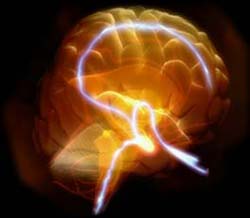The American scientific journal Live Science has debunked some of the most popular scientific myths. It turns out that not all of these stories are fabrications… But why do such misconceptions persist? No one can truly know!
Can a chicken live after being decapitated? – True
In fact, a chicken can continue to “live” for several minutes after losing its head. It can run around and even attempt to fly. This is because part of the chicken’s brain that controls reflexes remains intact after decapitation. There have been instances where a chicken lived for 18 months without a head.
 Does the human brain only operate at 10% capacity? – False
Does the human brain only operate at 10% capacity? – False
This misconception has existed for centuries. Fortunately (or unfortunately), that is not the case. Studies of brain activity show that a significant portion of the cerebral cortex is active throughout a person’s life. The brain functions even when we are asleep.
Is there no gravity in space? – False
This misconception arises from terms like “zero gravity” and “weightlessness.” In reality, gravity exists everywhere and affects everyone equally. Astronauts in orbit experience weightlessness only because they are in free fall towards Earth along with their spacecraft. Additionally, the idea that space is a vacuum is also incorrect. In fact, the space between stars is filled with atoms and molecules, just at a much greater distance than on Earth.
Eating a poppy seed is the same as smoking marijuana? – True
While a poppy seed may not induce the same “high” experienced by drug users, it can still cause issues. Shortly after consuming a poppy seed, a blood test may yield a positive result for drugs!
A coin dropped from a skyscraper can kill someone? – False
A standard coin cannot be lethal from a physics standpoint. Due to wind and air resistance, even a coin dropped from a tall building like the Empire State Building (380m high) would not fall fast enough to cause injury.
Do human brain cells stop growing? – False
Although the human brain undergoes significant growth and development primarily during early life, the development of brain cells continues into adulthood.
Can chicken soup cure the common cold? – Almost true
While chicken soup cannot cure a cold, scientists support the idea that consuming a bit of chicken broth can help because it contains anti-inflammatory compounds that can prevent the illness from worsening.
Is yawning contagious? – Almost true
Experience shows that when one person starts to yawn, he or she can “infect” those around them. It is difficult to scientifically quantify this, but some anthropologists believe that humans inherited this mimicking reflex from their primate ancestors.
 Does lightning never strike the same place twice? – A dangerous myth
Does lightning never strike the same place twice? – A dangerous myth
In fact, the opposite is true. Lightning has its “preferences.” It is well-known that lightning tends to strike high points, so it is unwise to seek shelter under a tree that has already been struck. The Empire State Building is struck by lightning an average of 25 times a year.
Do hair and nails continue to grow after death? – False
After death, all bodily processes cease immediately, including the growth of hair and nails. This misconception arises simply from illusions. After death, the human body loses moisture, causing the skin to shrink, which can create the appearance that hair and nails are growing.
The five-second rule? – False
Some believe that food dropped on the floor can be safely picked up within a few seconds, especially fried foods, without risk of contamination. The reality is that harmful bacteria can attach to food at any time it comes into contact with surfaces.
Can animals sense impending natural disasters? – Seems untrue
There is still no evidence of animals possessing a “sixth sense.” However, their heightened sensitivity in smell, hearing, and sight, which are more developed than in humans, may help them sense danger. That’s why animals do not approach storms or tsunamis out of curiosity. Furthermore, many animals also perish during natural disasters, so if they do have a sixth sense, it does not seem to help them much.
Is the Great Wall of China the only man-made wonder visible from space? – False
Astronauts can see many wonders from low Earth orbit, such as the pyramids and even major airport runways. However, seeing the Great Wall without knowing its exact location is more complicated than spotting other landmarks. It is certainly not visible from the Moon.
Do men think about sex every 7 seconds? – Not true
Of course, the instinct to reproduce is inherent in every human. However, scientifically controlling the frequency of these thoughts is impossible. According to some sociological studies, the claim that men think about sex every 7 seconds is an exaggeration.
Notable Deceptions
The “Phantom Patient” Incident
A few months ago, the prestigious medical journal The Lancet was caught in a scandal: a comprehensive study on oral cancer co-signed by 14 international scientists. The lead researcher, Norwegian physician Jon Sudbo, 44, later admitted to inventing hundreds of patient records to bolster his study. The co-signers were completely unaware and misled.
The Gay Gene
In 1993, Dr. Dean Hamer (National Institutes of Health, USA) published a paper in Science claiming he had discovered a “gay gene,” or more accurately, a peculiar marker on the X chromosome commonly found in most gay men. This shocking news suggested that homosexuality is not pathological but rather genetic. However, upon closer examination, many results in the study were found to be overstated, not to mention methodological issues.
The Cold Fusion Incident
In 1989, as questions arose about whether the ITER project (International Thermonuclear Experimental Reactor) could successfully achieve nuclear fusion, Stanley Pons and his colleague Martin Fleishmann — two electrochemists from the University of Utah — claimed they had achieved controlled fusion at room temperature (producing helium from hydrogen atoms) by inserting a palladium needle into heavy water.
The price of palladium skyrocketed, and laboratories worldwide rushed to replicate the “cold fusion” experiment. Of course, they were never able to reproduce the results published by Pons and Fleishmann because the two scientists had fabricated the data.
The Prehistoric Tribe Incident
In 1972, Manuel Elizalde, a young government official under the Marcos regime, “discovered” a prehistoric tribe in the Philippines. This tribe, living in the wild and named the Tasaday, quickly made the cover of National Geographic magazine, and NBC promptly issued a $50,000 check to Elizalde to produce a documentary about this unique community. Three years later, it was revealed that this so-called prehistoric tribe was, in fact, local natives who had been invited to act as primitive people living in a cave.
TRAN DUC THANH – N.QUAN



















































